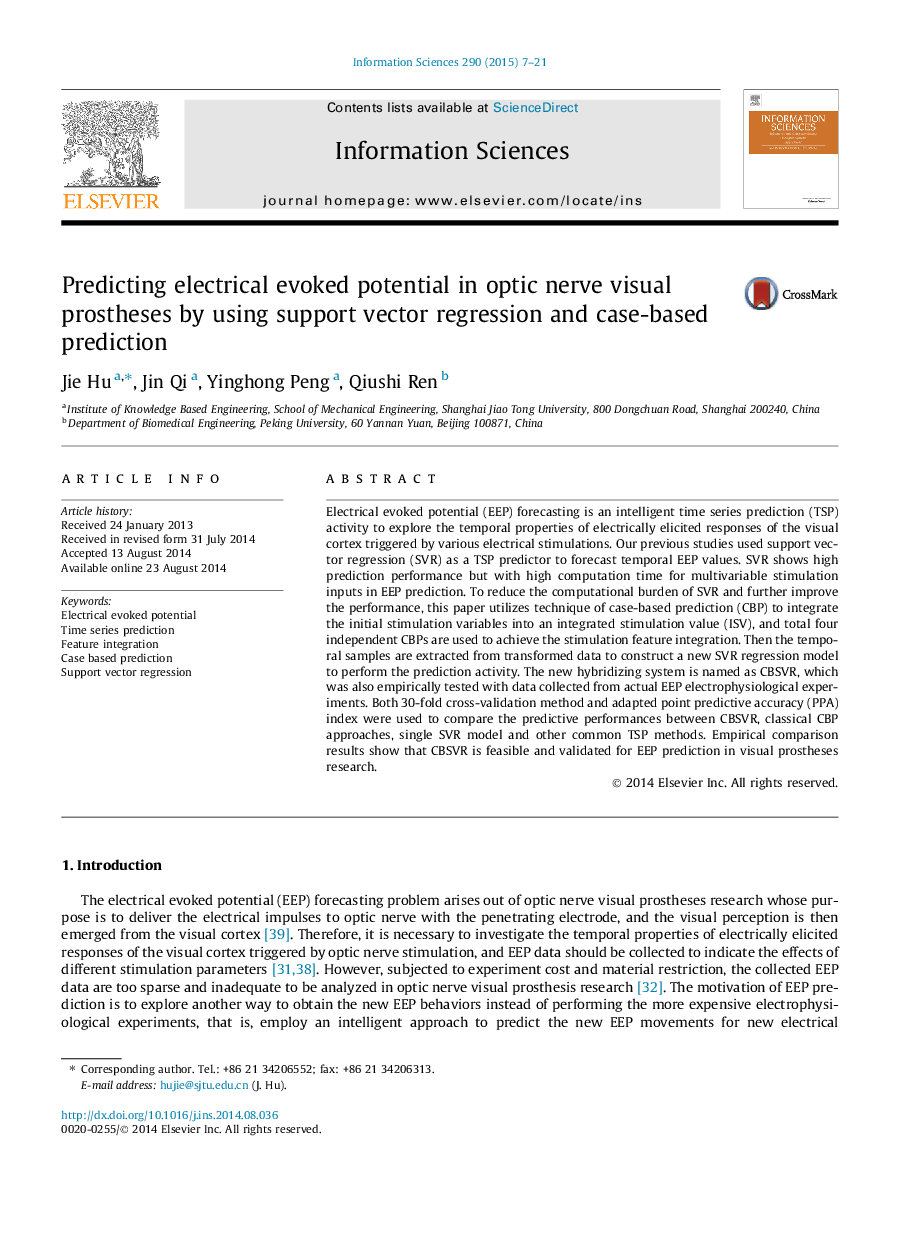| Article ID | Journal | Published Year | Pages | File Type |
|---|---|---|---|---|
| 393235 | Information Sciences | 2015 | 15 Pages |
Electrical evoked potential (EEP) forecasting is an intelligent time series prediction (TSP) activity to explore the temporal properties of electrically elicited responses of the visual cortex triggered by various electrical stimulations. Our previous studies used support vector regression (SVR) as a TSP predictor to forecast temporal EEP values. SVR shows high prediction performance but with high computation time for multivariable stimulation inputs in EEP prediction. To reduce the computational burden of SVR and further improve the performance, this paper utilizes technique of case-based prediction (CBP) to integrate the initial stimulation variables into an integrated stimulation value (ISV), and total four independent CBPs are used to achieve the stimulation feature integration. Then the temporal samples are extracted from transformed data to construct a new SVR regression model to perform the prediction activity. The new hybridizing system is named as CBSVR, which was also empirically tested with data collected from actual EEP electrophysiological experiments. Both 30-fold cross-validation method and adapted point predictive accuracy (PPA) index were used to compare the predictive performances between CBSVR, classical CBP approaches, single SVR model and other common TSP methods. Empirical comparison results show that CBSVR is feasible and validated for EEP prediction in visual prostheses research.
